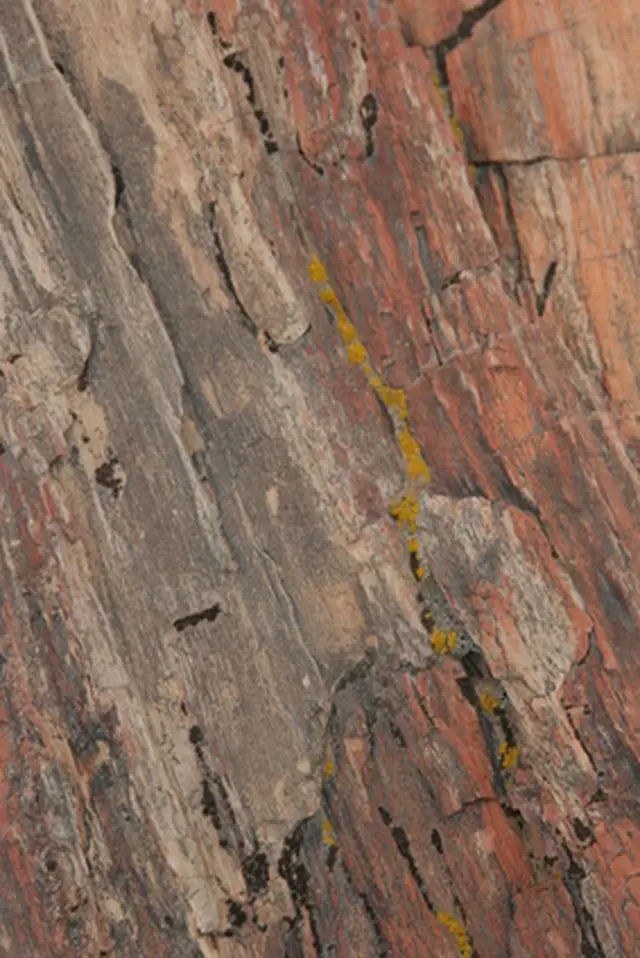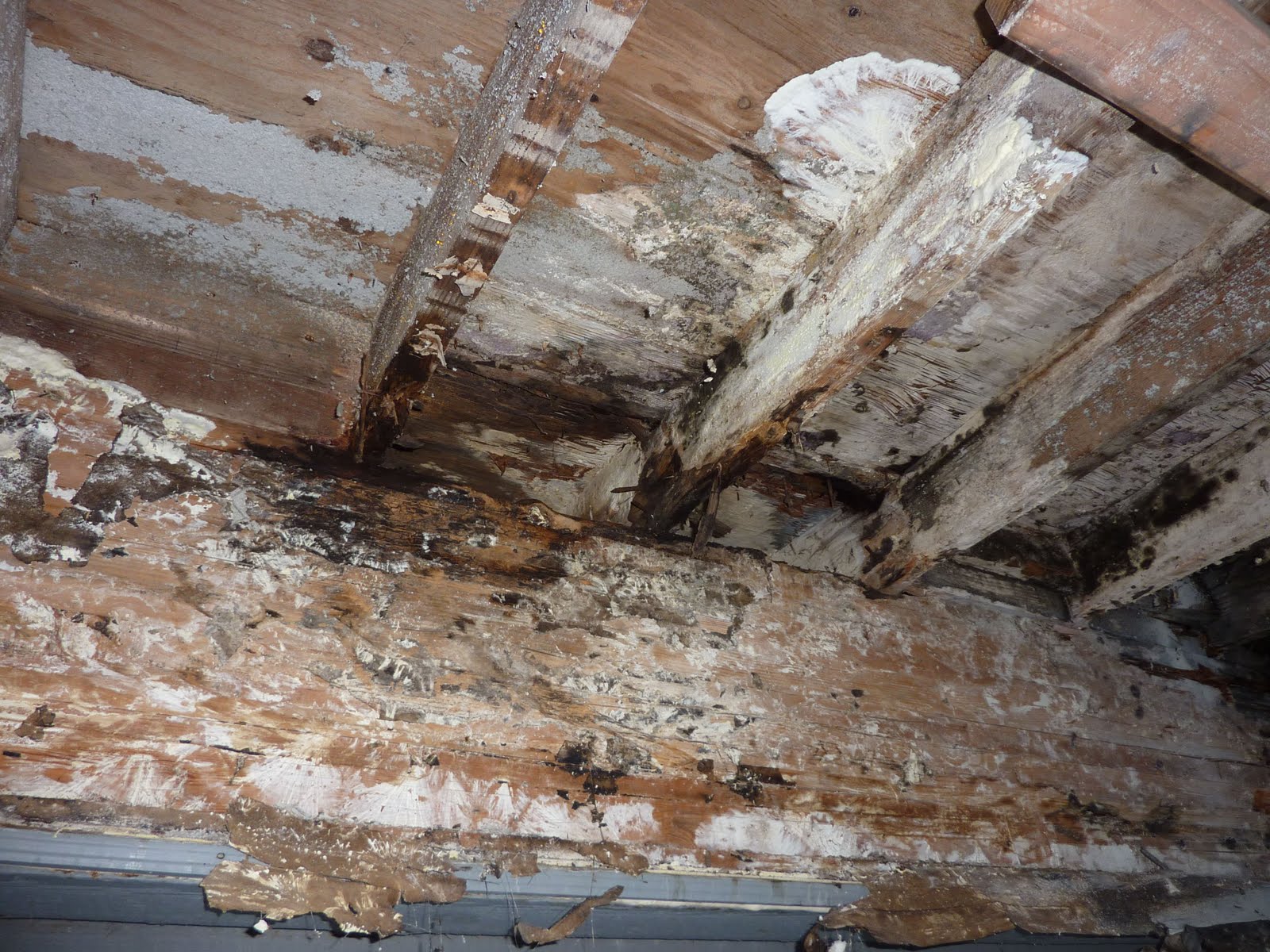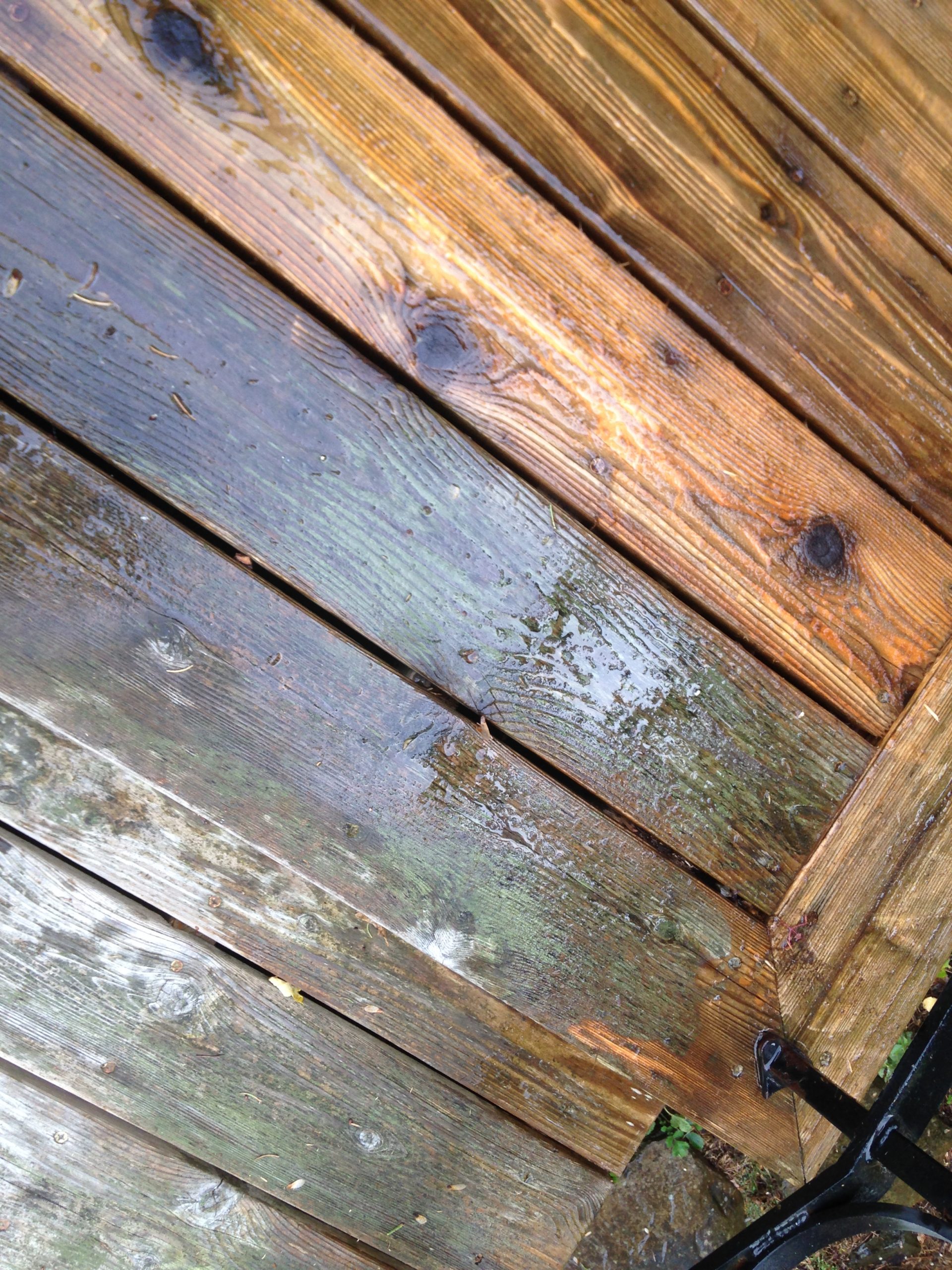How To Use Vinegar To Remove Mold Or Mildew In Your Home
Before you clean the mold, its important to address the moisture problem that led to the mold growth in the first place. If you get rid of the mold without targeting the moisture, it will almost certainly grow back.
Once youve fixed the moisture problem, heres how you can use vinegar to remove the mold.
What Can I Spray On Wood To Kill Mold
You can spray the following mixtures to eliminate molds.
One teaspoon of dishwashing detergent and lukewarm water in a spray bottle. Shake well to mix and use it on the affected places. Equal parts white vinegar and lukewarm water in a sprayer Concrobium Mold Control in a garden sprayer Drops of vodka to water in a spray bottle
What Causes The Growth Of Mold On Wood
Molds usually reproduce through the production of large amounts of spores. These spores are airborne and are adaptable to wind dispersal. They, therefore, quickly grow on outdoor woodand can get indoors through areas such as open doors and windows. Mold spores can also attach themselves to clothes and animal fur.
With the right conditions, such as warmth, moisture, darkness, and time, these spores will produce mold.
Some of the common causes of mold on wood in your home are:
- Flooding
After you experience flooding in your home, you will almost inevitably develop mold problems shortly after that. Flooding brings in a significant amount of water, and wood will remain wet for days or even weeks to come. Different mold types require a surface to stay moist for different amounts of time, with some needing only 24 hours before growth begins. To mitigate these effects, you should contact a restoration company immediately after the disaster passes.
- Poor ventilation
If you do not have an efficient ventilation system, it can cause the development of moist and stagnant air pockets. Any wet surfaces in the home will also dry out slower if the house does not have adequate ventilation. Rooms like bathrooms and kitchens that generate a lot of steam are especially vulnerable to excess moisture that leads to mold growth. To prevent mold on wood indoors, leave the doors and windows open, and use a fan as needed.
- Leaking pipes
- Leaks in your roof.
- Increased humidity
- Wet clothes
- Basements
Don’t Miss: How To Get Mold Out Of Bathroom Ceiling
Is Vinegar More Effective Than Bleach
Vinegar truly is better than bleach at killing mold. The EPA does not recommend using bleach to kill or remove mold, except in special circumstances. In most cases, a background level of mold spores will remain after the application of bleach.
Bleach only kills surface mold, not the membrane underneath, according to ServiceMaster. That means the mold will grow back. In fact, recognizing the bleach as a threat, the mold will grow back even stronger. When bleach is used on porous surfaces like drywall or wood, mold membranes will move deeper into the surface to avoid the chemical.
Noticing Your Mold Problem

Also Check: Sanding Mold Off Wood
If Necessary Sand The Wood
These cleaning solutions should take care of your mold problem, but if youve got some stubborn traces left under the surface, you have one last resort: sanding.
- Use 100-grit sandpaper to rub out the affected portion, taking care not to sand away too much of the surrounding areas.
- Repeat Step 2 to remove the dust and any loosened mold spores.
Other/exterior Vinyl Gutters/hashing Screens Shutters/window Mantelsitrim
CAUTIONS:
- Be careful any time a commercial product or combination of cleaning supplies are used.
- Be sure to store and dispose of products!cans/containers as recommended. Keep out of reach of children.
You May Like: How To Clean Mold In Bathroom Ceiling
How To Identify Mold On Wood
Wood is a porous material that readily absorbs water, creating a great environment for mold to grow. So, how can you identify when you have a mold problem on wooden surfaces in your home? It starts with knowing what a mold outbreak looks like. Mold growth will manifest as black spots, green streaks, or white discoloration on wood. If you notice any of these patches, its important to take action right away. Indoor and outdoor locations can host hundreds of mold species. While many molds are harmless, some might be dangerous for your health, particularly if they are present in your home.
Removing Mold From Fabric
If your home has been flooded and mold and bacteria have been left to grow for many days, it may be impossible to salvage fabric items. However, if mildew has developed due to dampness and is caught early, it can easily be removed from most fabrics.
Begin by taking the items outside to brush away as much surface mold as possible and to prevent spreading the mold spores inside your home. If the fabric is washable, use the hottest water recommended on the care label and add a disinfectant. If stains remain, create a solution of oxygen bleach and water and allow the clothes to soak for at least eight hours. Oxygen bleach can be used safely on any washable fabric.
For fabrics that are dry clean only, brush away the mildew outside and then head to a professional cleaner. Identify and point out the stains most fabrics can be successfully restored.
You May Like: How To Fix Mold On Bathroom Ceiling
Removing Mold From Wood For Floors And Ceilings
If surface mold becomes present on your ceiling or floor, the first step is to determine what source is causing the mold to grow. Next, look for signs of water damage since mold needs moisture to form and spread. After repairing the issue, you can get to work removing the mold from the wood.
Start with removing all the furniture from the space. Then prepare your cleaning solution a mix of vinegar, water, and dish soap to start. Apply this solution to the moldy area and let it sit for 10 minutes. The ingredients should kill all surface traces and prevent regrowth.
Then, wipe the solution off using a wet cloth. Once the floor is dry, you can put the furniture back in place. And for two to four weeks, keep a close watch to make sure there are no signs of mold returning.
But if the mold penetrates the woods innards in the floors or ceilings, you should start with the hydrogen peroxide mixture. After letting the solution soak, scrub the area with a hard bristle brush. Then if that fails, try a commercial cleaning solution or seek out professional help.
Pro tip Always wear protective gear a mask and rubber gloves. And use proper ventilation open windows or turn on fans.
Spraying The Wood With Vodka
If exposure to sunlight doesnt work, you should spray the wood surface with chemicals using a spray bottle. There are various chemicals that you can use in washing, but you should start with vodka.
Spray bottle filled vodka on the wood and allow it to completely dry. This is an effective mold prevention method. You should combine sun-drying with vodka-spraying for even better results. Allow the wood to dry before bringing it back in.
Recommended Reading: Clean Bathroom Mold From Ceiling
How To Remove Mold From Garden Furniture
To remove mold from garden furniture you need a hard brush and water. If you fail to clean them you can add vinegar to the treatment.
The mixture must contain vinegar and water. Make sure that you clean all the furniture, not only the attacked parts, because the invisible spores of the algae can spread on all the furniture.
Remember to clean all the corners and cracks with the solution against mold and fungi, otherwise they will reappear soon.
CHEMICAL TREATMENT AGAINST MOLD
If the mold is still damaging your furniture, and the mixture of water and vinegar has not been shown to be effective, you can take more drastic measures.
There are several types of cleaning solutions that can remove fungi and mold from wood furniture in 1-2 weeks. Another advantage of these solutions is that of surface protection and prevention of new deposits.
SAME TREATMENT AGAINST WOOD AND PLASTIC MOLD
Regardless of the material of your garden furniture, the treatment against mold is the same.
However, plastic garden furniture can withstand mold removal methods better than wood, which you need to be careful about if you use a hard brush or pressure washer.
If you choose to remove deposits with a pressure washer, keep a safe distance so that you do not damage the furniture and create irregularities that will facilitate the installation of algae.
AFTER MOLD TREATMENT
Over time, teak wood furniture takes on a natural white tint that can be removed with teak oil.
How Do We Detect Mold In Places Where It Is Not Visible

Mold is hard to detect because it can also be formed in places out of sight: after large furniture objects, for example.
It is possible to have mold under the parquet, in case you do not see it, but it can affect your health, as well as the one from visible places.
You can realize that there is mold in your house if you feel a specific smell of moisture.
The smell of mold resembles that of moist soil. If you spend a lot of time at home, there is a chance you will not feel it.
However, if you return home after spending some time away, you smell this smell, but do not find the place where it formed, you should investigate its source. If you do not see it behind the furniture items, you should also check the floor.
Want to know if wood is rotten? I will show you an easy guide how you can detect if wood is rotten!
Don’t Miss: Black Mold In Shower Grout
How To Remove Mold From Untreated Wood
Related Articles
Mold can be found outside and inside homes, on cut lumber, in heating and air conditioning systems and on plants, paper, insulation, carpeting and wood. Not only is mold unattractive and smelly but mold can also cause some real health problems, so using mold killer is always a good idea. According to the Centers for Disease Control and Prevention, mold spores can grow on damp surfaces as well as dry ones and can be harder to eradicate on certain materials, like untreated wood.
Dangerous Mold Vs Mildew
The most common type of mold found in homes is mildew. Mildew is a surface mold that grows in warm, damp places like your bathroom and on fabrics and books stored in damp basements. Mildew begins as a gray or white powdery colony. It will turn black or brown if not removed promptly and often looks like soil accumulation. To test if the surface is covered with mildew or just dirt, dab the stain with a cotton swab dipped in household chlorine bleach. If the stain lightens or disappears after two or three minutes, it’s mildew. If not, it’s probably just dirt.
If you detect a musty smell anywhere in your home, then you have a high concentration of mold. It can be coming from a hamper filled with damp towels, from a damp crawlspace under your home, or carpets that have mold growing in the padding. If you smell that odor, it’s definitely time to take action to get rid of the problem.
All mildew is mold, but not all molds are mildew. Mildew can discolor and slowly harm surfaces but there are much more dangerous molds that can damage the structure of your home. If you see a black or green mold that is fuzzy or slimy and the drywall or wood underneath is soft or crumbly, there is irreversible rot, and the mold and the damaged surfaces must be removed immediately.
You May Like: Mold Or Mildew On Bathroom Ceiling
How To Remove Mold From Wood Yourself
You can remove mold from wood in several different ways the method you use all depends on how bad the mold has gotten. If the wood is untreated and unsealed, you may have to sand and scrub the mold away, as it can be very porous. If the mold has not penetrated the surface as yet, you might be lucky and can perhaps remove it with some white vinegar in a spray bottle. What follows are guidelines to clean mold from wood using natural chemicals.
Best Option For Removing Mold: Concrobium Mold Control Spray
Instead of making remedies at home, why not try Concrobiums mold control spray? It has been formulated specifically for preventing and killing mold and mildew on surfaces without the use of any toxic ingredients. It comes in a trigger spray bottle, is premixed, and can cover an area of 100 square feet.
- Concrobium mold control effectively eliminates existing mold
- Prevents mold re-growth and eliminates musty odors
- Contains no bleach, ammonia, or volatile organic compounds
- Prevents regrowth and kills mold
- No rinsing or scrubbing required
- Great for use on wood and drywall
CONS
- Existing mold is not removed
- You will require a garden pump sprayer to apply it
Read Also: How To Remove Mold From Basement
What Does Black Mold Look Like On Wood
Detecting black mold on wood may be somewhat tricky due to the wood pattern and patches. Identifying the right color of the wood will help you look for a darker shade on the wood surface. Black mold may grow on either side of the wood before spreading to other parts in circular patterns. Black mold will flourish under damp or moist areas before expanding to much larger areas. Thus, when looking for black mold, check for areas with a high concentration of moisture and dark greenish colors spreading to other areas. Another way to identify black mold on wood is through the pungent odor that comes from the mold.
When inspecting for black mold in your home, ensure that you cover your nose, eyes, hands, and mouth covered. It is because of the natural toxins contained in the black mold that may cause adverse respiratory problems.
Removing Mold From Tile And Grout
Bathroom humidity and body soil on surfaces create the perfect environment for mold growth. There are plenty of commercial cleaners that you can buy, but chlorine bleach and water are just as effective and much less expensive.
Simply mix one part bleach to 16 parts water and apply to the mold-affected areas. Allow the solution to remain on the moldy area for at least 15 minutes before scrubbing or retreating. Rinse with water and wipe dry, keeping windows open until fully dry.
Don’t Miss: How To Mold Leather Holster
How To Clean Mold Off Wood
- Pin
- Total Time: 3 hrs
- Skill Level: Intermediate
Black mold on wood should be removed as soon as possible, as it can pose a health risk to those in its vicinity. Wet cellulose materialse.g., wood that has become damp due to a leakprovide the right environment for many types of mold to grow. Safe removal is key, so the mold doesn’t spread on surfaces or in the air. Follow these steps to properly remove mold from wood.
Stop The Spread Of Mold

Items that have been sitting near the mold colony often are dusted with spores and growth. Bookcases, closets, and pantries are especially susceptible, since we’re prone to “dust around” long-term items like earthquake kits, read books, and clothes you’ll wear once you renew that gym membership. Before moving the infected items, clean them throughly so the mold doesn’t move into a new home. Here’s how:
*NOTE: Do NOT mix bleach with cleaning products that contain ammonia. It creates a toxic vapor.
Don’t Miss: How To Clean Mold Off Ceiling In Bathroom
Treat The Area With Dish Soap And Warm Water
Depending on how much you have to clean, mix about 1tps dish soap to 1 cup warm water. I had about 20 slat ends to treat so I tripled those quantities and refreshed the mix every 4-5 slats to ensure I wasn’t scrubbing super dirty water back onto the wood.
Use the toothbrush, and a fair amount of elbow grease, and start scrubbing away at the affected areas.
Repeat the rounds and honestly, this lifted off a lot of the mold for me. It’s super effective.
Renee Kraus, founder of Renee’s Cleaning Services recommends using . ‘If the mold has not penetrated the wood, use a teaspoon of Dawn in a spray bottle filled with warm water. Spray the affected area, rub with soft-bristled brush. Wipe dry with a towel.’
